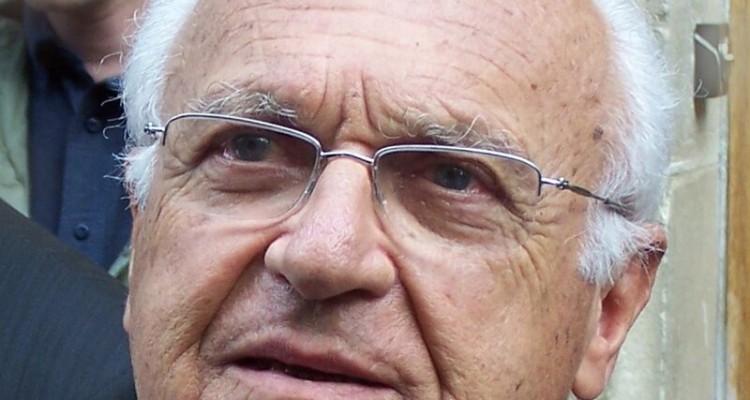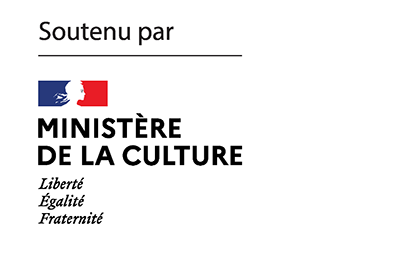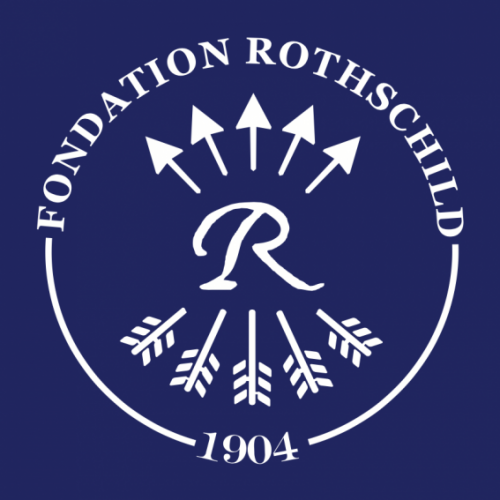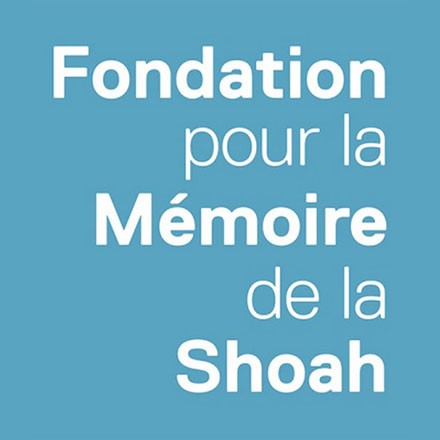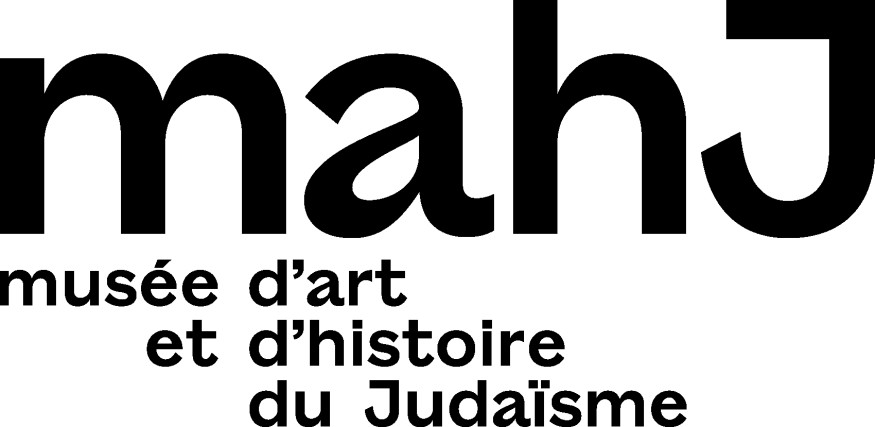The Jewish community of Rhodes did not survive the Shoah. Most of the Rhodesians rounded up by the Nazis on 23 July 1944 for deportation died on the way or were murdered on arrival at Auschwitz-Birkenau. There are few traces left of the former Jewish presence in Rhodes today. But it is these traces that interest historian Dario Miccoli. Here he shares his impressions of his recent stay on the island and his desire to reinvest local Jewish history in order to think about its contemporary challenges[1].
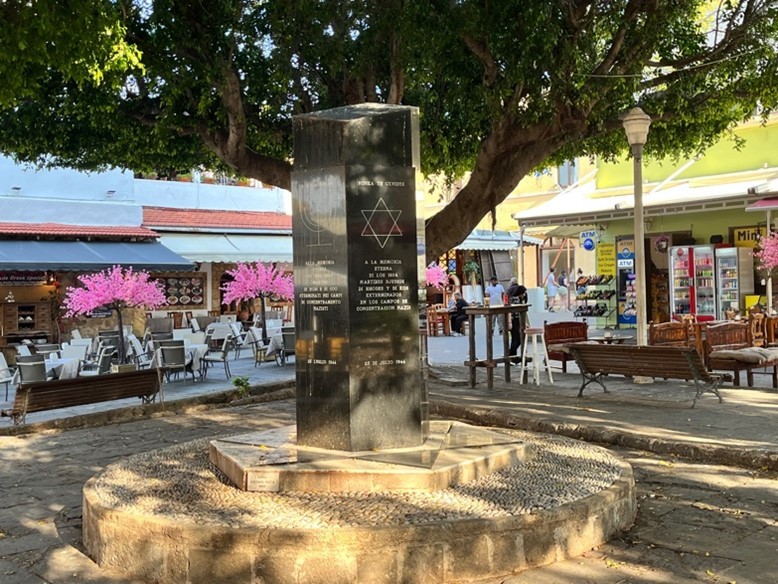
It was as if a large epidemic
had suddenly depopulated the entire juderìa.
The abandoned houses asked in disbelief
what kind of strange disease
had killed the elders, youth, children
causing a tragic collective funeral.
For the houses, the closed windows were like wounds,
and they were already thinking about the new owners
because things often suffer more than people. [2]
For most tourists the walk through the old city of Rhodes, the Jewish quarter – the juderìa, as it used to be called in Judeo-Spanish – must appear as a quiet neighbourhood of small alleys and courtyards, often in need of restoration, that extends from the city walls to Virgin Mary Gate on one side and to the Square of the Jewish Martyrs on the other. At one of its edges is what was once called la cay ancha (Judeo-Spanish: “the large street”), nowadays surrounded by cafés and shops that sell postcards, leather sandals and other souvenirs typical of any Greek island. In the middle of the square, at the end of la cay ancha, stands a small hexagonal monument erected in 2002 “in eternal memory of the 1604 Jewish martyrs of Rhodes and Kos exterminated in the Nazi concentration camps”. The Qal Shalom synagogue and the Jewish Museum are a few minutes walk from the monument. The synagogue, the only one in Rhodes that can be visited and that is still sporadically used for religious services, was restored in 2004 under the impulse of Jewish heritage activists and donors from Athens and abroad. The adjacent museum was inaugurated in 1997 and hosts a small collection of objects, photographs and provides visitors with significant information on the history of the Jews of the island.
A brief history of the Jews of Rhodes
The monument, the synagogue and the museum – together with a couple of inscriptions that can still be read on buildings in the old city – are the only visible traces of a centuries-old Jewish presence in Rhodes, erased in July 1944 with the deportation of almost all the Jews living in this corner of the Aegean sea. Rhodes: the island of the Colossus erected in honour of the sun god Helios in the fourth century BC, of the Knights Hospitaliers (1306-1523), of the Ottomans (1523-1912), of the Italians (1912-1943), and finally of the Greeks – after the annexation of the Dodecanese to Greece in 1947. The Jews were an integral component of this complex and sometimes turbulent history:
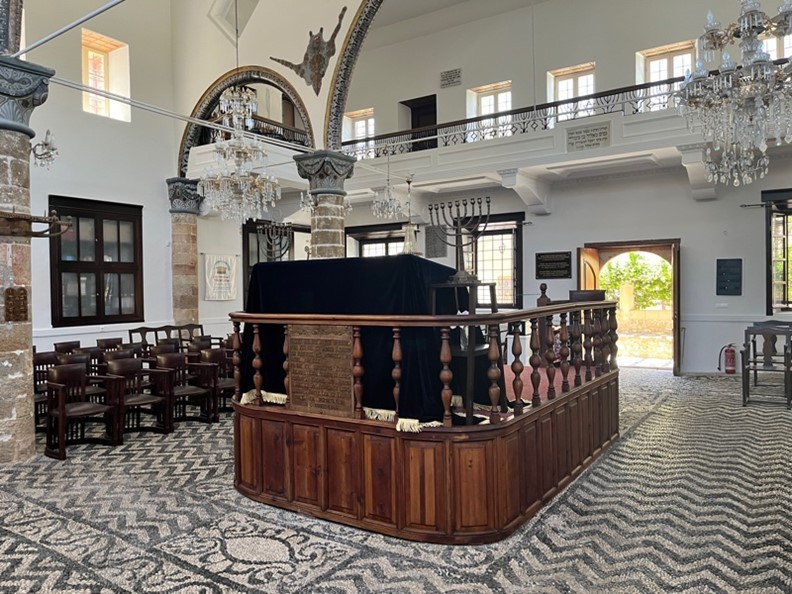
a community of c. 4,000 people, the first Sephardis arrived in Rhodes in the early sixteenth century and rapidly supplanted the few Romaniote Jews that had been living there for centuries. Even though some obtained significant roles in local or even international trade in the course of the Ottoman period, particularly the Alhadeff family, the majority of the Rhodeslis (Judeo-Spanish and Turkish: lit. “[Jews] from Rhodes”) always remained modest vendors and workers. Just like the Greek-Orthodox Dodecanesians, in the early twentieth century many of them started to emigrate to places as diverse as Egypt, the US and even to more remote destinations such as the Belgian Congo, Southern Rhodesia and South Africa, for economic reasons and – from 1938 – also in consequence of the Italian anti-Jewish laws. The little-known story of the Rhodeslis of the Belgian Congo and Southern Rhodesia is actually what led me to Rhodes in May 2023 and, before that, what drove my interest for this diaspora. In fact, almost 2,000 Jews from Rhodes emigrated or were born in the Belgian Congo and Southern Rhodesia between the 1920s and the 1960s, giving life to small yet thriving communities that remained there until the end of colonialism and even later. And yet, almost nothing has been written about them, more generally as the Jews of Rhodes.
While being a period of migration, the years of Italian rule – especially from 1912 to 1936, that coincide with the governorate of Mario Lago – are portrayed as the golden era of Rhodes and of the Jewish community. In memoirs and autobiographies published over the last thirty years, the interwar juderìa is remembered as an idyllic world, where “each of us was bound together by our traditions, and we were linked irrevocably to the beauty of life in this beautiful place called Rhodes”. At the same time, it was a world that resented also from Ottoman models of separation and cohabitation, as noted by Vittorio Alhadeff: “we made business drinking never-ending coffees; we had sincere and solid friendships between Turks and Jews or between Turks and Greeks, rarely or never between Turks and Greeks. [But] these relations never went further than that. Families did not mingle […]”. This Rhodes was to end abruptly in July 1944, when the German army arrived and deported almost all of the c. 2,000 Jews living in the juderìa and the c. one hundred Jews of Kos – a smaller island, also part of the Italian Dodecanese. After the war, almost none of the less than two hundred survivors wanted to return to Rhodes, where a small Jewish community was eventually re-created in the late 1950s, with the arrival of a handful of families from cities such as Volos and Thessalonika that responded to an appeal launched by the Central Board of Jewish Communities in Greece. Since then, what remains of the juderìa is dispersed between the US, Latin America, Africa, Israel and Italy – all places where small Rhodesli diasporas re-emerged and the heritage of the community was and still is being kept alive in the forms of synagogues bearing the name Qal Shalom, heritage groups, books, Sephardi cuisine and music, paintings and documentaries.
The imaginary of Rhodes and the challenges of the present
While in Rhodes, I walked through the streets of the old town and took photographs of the juderìa, of the mosques, of the neo-Orientalist and Rationalist buildings constructed by the Italians in the 1920s and 1930s near the new harbour, of the 1960s and 1970s hotels and blocks of flats of the neochori (Greek: “new town”). Moreover, as I sat in the Regional Archives of the Dodecanese – hosted in a beautiful medieval building in the heart of the old city – I started wondering whether in order to understand this island and its Jewish past, one has to think Rhodes not only in real terms, as a historical site and a destination visited by almost half a million tourists every year, but also in an imaginative way. At the same time, I realised that just like for many other places in the Mediterranean, in Rhodes too “the battle is over the future of the past” and over the traces that remain of it. Then, for me as a historian the challenge is how to reconcile this past – that I read about in dusty documents produced by the Italian administration in the 1920s or 1930s and that I felt in the silence of the juderìa – with the present of Rhodes, it’s sunny beaches and noisy tavernas.
During the days spent on the island, I continued to interrogate myself but struggled to find an answer.

Then, on the last day and only a few hours before catching my flight to Athens, I met Father Luke Gregory – Vicar General of the Catholic Archdiocese of Rhodes. While we talked in one of the rooms of the Archdiocese, next to the Church of Sancta Maria, Father Luke explained how for him this island “is like a door between East and West”. It is also a memory that can be evoked in relation to stories of mobility, happiness, nostalgia and trauma that usually refer to the Jews, the Italians or the Turks. But “what about us?” – Father Luke asked thinking of today’s Middle Eastern migrants arriving to the Greek islands from Turkey and the harsh conditions in which they found themselves in Kos, Lesbos or to a lesser extent Rhodes itself. From the edges of an imaginary Europe – and of a more real European Union – can Rhodes still speak to us and shed light on the porousness and resilience of national and identity borders, on the possibilities and limits of convivencia, on the ambivalence of colonialism, on the tragedies and hopes, on the relics on which contemporary Europe and a country like Greece in particular were born?
Reflecting on his words, I started to think that what Rhodes and its (Jewish) history testify is that, perhaps, we are all relics of a past that is no more – or that has never been – and whose presence haunts us, as in the poem Thrush by the Greek Nobel Prize for Literature George Seferis:
It’s as though
returning home from some foreign country you happen to open
an old trunk that’s been locked up a long time
and find the tatters of clothes you used to wear
on happy occasions, at festivals with many-coloured lights,
mirrored, now becoming dim,
and all that remains is the perfume of the absence
of a young form.
Really, those statues are not
the fragments. You yourself are the relic;
they haunt you with a strange virginity
at home, at the office, at receptions for the celebrated,
in the unconfessed terror of sleep;
they speak of things you wish didn’t exist
or would happen years after your death,
and that’s difficult because. . .’
— ‘The statues are in the museum.
Good night’.
— ‘. . . because the statues are no longer
fragments. We are. The statues bend lightly. . . Good night’[3]»
Tourists, refugees and the link to Jewish history
Upon leaving the Church of Sancta Maria, I looked at the Turkish coast that can be seen from the harbour and thought of migrants from places like Syria or Iraq that arrive on the Greek islands after perilous journeys, escaping poverty and war, but also of the thousands of tourists that visit Rhodes every summer, among which are the descendants of Rhodeslis now living in Seattle, Cape Town, Rome or Tel Aviv that go back to retrace the world of their ancestors. In fact, the number of Jewish and especially of Jewish Israeli tourists in particular is so high that in 2017 a small Israeli-owned Beit Chabad – mainly functioning as a kosher restaurant and catering – was opened in Ialyssos, only a few kilometres from the city of Rhodes. Each one of these people experiences a different fragment of Rhodes: the vanished juderìa, the beach of Lindos or Faliraki, a reception centre in the former slaughterhouse of Akandia – where more than a thousand refugees were hosted in the summer of 2019. But “what about us?”, as Father Luke asked. Is there a collective we binding together past and present, reconciling these memories and traces?
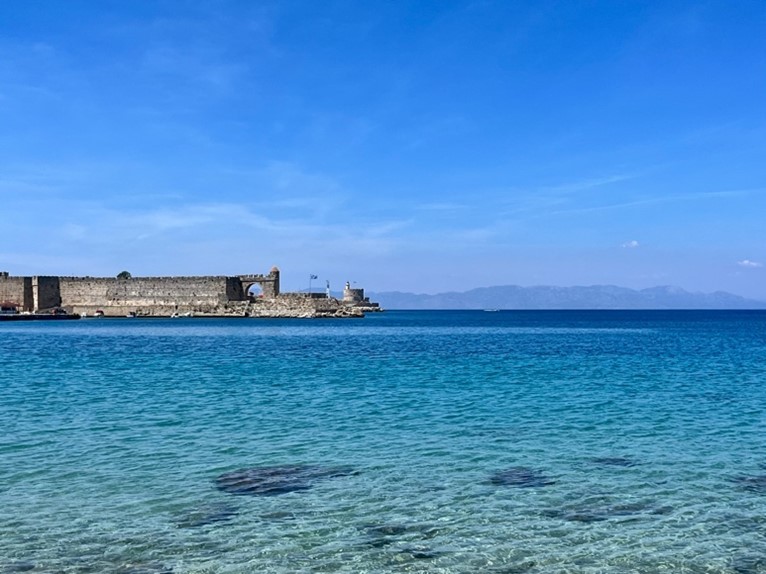
The history of Rhodes and of its Jewish inhabitants – with its joyful and tragic sides – can perhaps symbolise that we and constitute a starting point to reconsider the meanings of the Mediterranean, of its global ramifications. It is a history that obliges us to confront the darkest sides of Europe’s history: from colonialism to the Holocaust, up to the tragedy of today’s migrants. But it also reveals unexpected instances of coexistence and beauty, of resilience and rebirth: from the rescue of c. seventy Armenian children from Anatolia in the 1920s to the fifty Jews, either Turkish citizens or with Turkish relatives, protected by the Turkish consul-general of Rhodes and saved from deportation in 1944. Moreover, in my case it is thanks to the juderìa that an entire world opened up and allowed me to talk with people living in places as far as Zimbabwe, the US and Belgium, to meet a British Franciscan friar and an Istanbul-born girl looking for the birth certificate of her great-grandmother – a Turk born in Rhodes in the 1920s. Undeniably, this history, like that of other cities that in the twentieth century experienced dramatic socio-political and demographic changes – from Thessalonika and Alexandria, to Algiers and Odessa – leaves one with a feeling of sadness and nostalgia for what is no more, but is sometimes still visible in the stones and walls of the juderìa.
My hope is that these Jewish traces and memories do not remain sterile, nostalgic evocations of a past that cannot return but an invitation to reflect upon the present and future – full of uncertainties, fears but also possibilities – that we all share across the shores of the Mediterranean sea.
Dario Miccoli
Dario Miccoli is a Professor of Modern Hebrew Language and Literature and Jewish Studies in the Department of Asian and African Mediterranean Studies at Ca’ Foscari University, Venice. His research focuses on the history and memory of Jews in Arab and Mediterranean countries, and on Israeli literature. He is the author of A Sephardi Sea: Jewish Memories across the Modern Mediterranean (2022) and Histories of the Jews of Egypt: An Imagined Bourgeoisie, 1880s-1950s (2016).
Notes
| 1 | This article was written as part of a stay as researcher in residence (April-May 2023) at the École Française d’Athènes, which I would like to thank for its support |
| 2 | Nora Menascé, “Qualcosa durerà…”: racconti, poesie, pensieri (Florence: Alinea, 2002), p. 156 (traduction de l’autrice) |
| 3 | Georges Séféris, « La grive », en Poèmes, 1933-1945 (Paris : Gallimard, 1966), pp. 146-147. |


